The monster trucks of the cycling world, fat bikes can venture to places other bikes can only dream of.
But what exactly are fat tyre bikes and do they make sense? In this article, we will explain their uses, pros and cons.
We’ll also explain the key things to consider when shopping for fat bike components, including what to look for with fat bike tyres.
What is a fat bike?
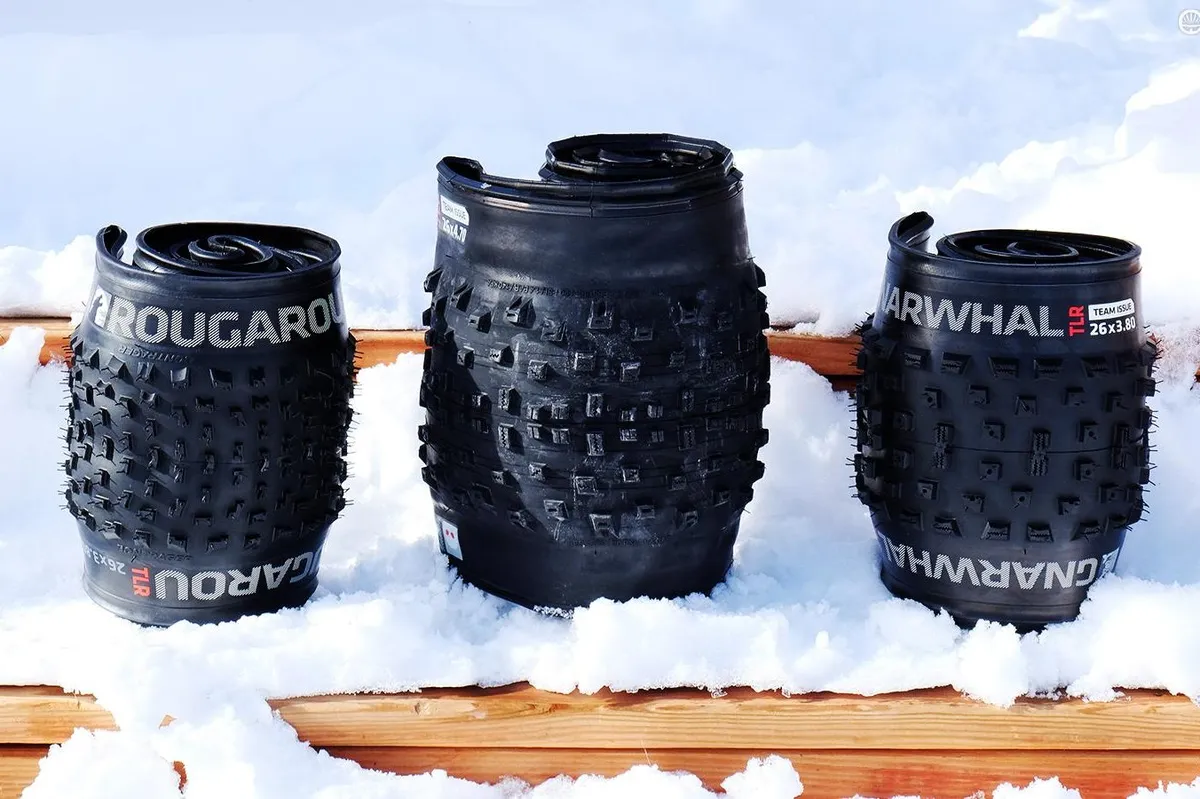
In short, a fat bike is a bicycle with very wide tyres, usually at least 3.8 inches in width.
They come in all shapes and sizes, but are usually geared up for off-road adventure riding and bikepacking.
Fat bikes commonly rely on their high-volume tyres for absorbing impacts from the trail, however, full-suspension fat bikes are also available.
What is a fat bike good for?

Originally designed to be ridden on sand and snow, the massive contact patch between tyres and ground enables fat bikes to float on top of soft terrain, where other bikes quickly sink and become stuck.
However, fat-tyred bikes aren’t confined to beaches, bogs and winter riding – they offer incredible grip on any terrain.
Due to their high volume, fat bike tyres can be run at very low pressures (between 5 and 15psi), giving them a floaty ride feel as the bike hoovers up roots, bumps and anything else you may come across on the trail.
Fat bikes are also very popular among adventure riders and bikepackers, especially when the route involves sandy or snowy stretches, and are often designed with mounting points for extra kit and bikepacking bags.
What are the disadvantages of fat bikes?
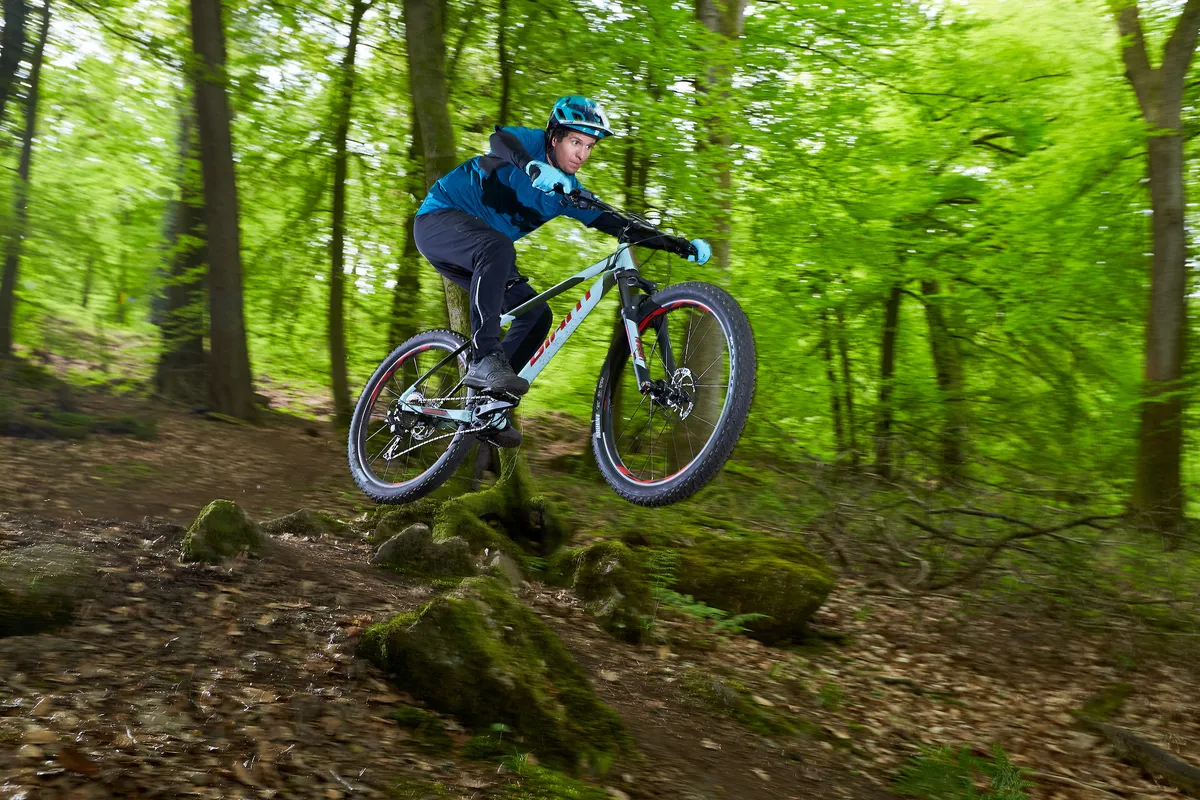
The most obvious pay-off is the increased weight brought about by the massive tyres, rims and oversized components (more on that later).
Despite their floaty ride feel, fat bikes are limited on technical descents.
Their wide tyres can feel very vague when precise riding is required. The large undamped air volume can create a pogo-stick-like ride when the trails get fast and rough.
Braking performance on steep trails is also sub-par compared to other mountain bikes.
Fat bikes have a very high rotating mass, meaning a lot of braking power is required to slow down their wheels.
Cost and component choice are also factors worth considering.
Fat bikes require specialist parts such as tyres, rims, hubs and cranks.
These can be more expensive than comparable parts for regular bikes and are often harder to come by, meaning there is less of a choice when it comes to speccing your bike.
Are fat bikes harder to pedal?

A common question is whether the big tyres make fat bikes harder to pedal than a regular mountain bike.
The answer is not entirely straightforward and depends on what (comparatively) skinny-tyred mountain bike is used as a reference point.
Fat bikes are indeed generally heavier than non-fat bikes. This can make them harder to pedal, especially uphill. The extra rotating mass and increased rolling resistance also makes them harder to get up to speed and limits their acceleration.
However, in some situations, such as slippery technical climbs, fat bikes benefit from their increased traction and make light work of terrain that would leave regular bikes guessing.
What types of fat bike are there?
Made to take you off the beaten track, fat bikes are designed with adventure riding in mind.
While they all share wide 3.8 to 5-inch mountain bike tyres, there are three key categories into which they can be grouped.
Hardtail or rigid fat bikes

Hardtail frames are the most common choice for fat bikes because they are lighter and easier to maintain.
Without rear suspension, hardtail fat bikes rely entirely on their oversized tyres to provide grip and comfort on the trail.
Some fat-tyre mountain bikes come specced with a specially designed suspension fork, but because the bikes aren’t designed with aggressive trail or enduro riding in mind, it’s just as common to see a fully rigid fork instead, especially on budget-priced options.
Full-suspension fat bike

Full-suspension fat bikes are a rare sight on the trails. Full-suspension frames are, by nature, heavier and more complex than hardtails.
Fat bikes further exaggerate these differences, because their frames are designed around accommodating super-wide tyres, meaning tyre clearance, axle spacing and wide bottom bracket junctions have to take priority over optimising suspension layouts.
While some fat-tyre riders may benefit from the extra grip and control made possible by rear suspension, the overall use case of fat bikes renders them somewhat irrelevant when compared to the lighter and simpler designs enabled by hardtails.
Electric fat bikes
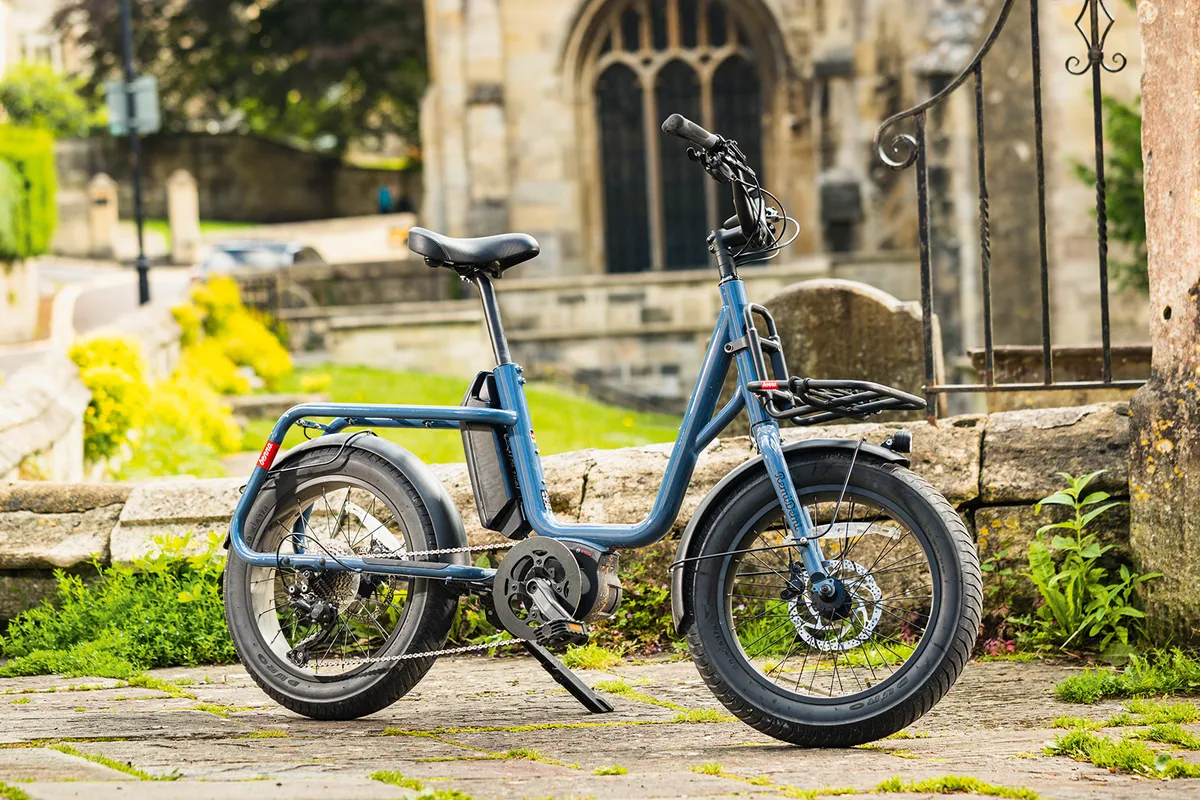
Electric innovation is taking the world of cycling by storm, so it’s hardly surprising to see fat bikes joining the electric bikes crowd.
However, it seems the mid-to-high-end fat bike market has been slow to adopt the trend. Looking at their intended use, it’s easy to see why.
Fat bikes are designed as adventure bikes, capable of taking on the extremes of sand, mud and snow-covered terrain.
While an electric bike motor may help them cover ground more quickly, the extra weight and finite battery capacity hinder their performance and adventurous intentions.
Fat bike components explained
Fat bikes require specialist frames and components to accommodate their massive tyres, which can make finding spares a tricky and expensive affair.
Here’s what sets fat bike components apart.
Fat bike wheels
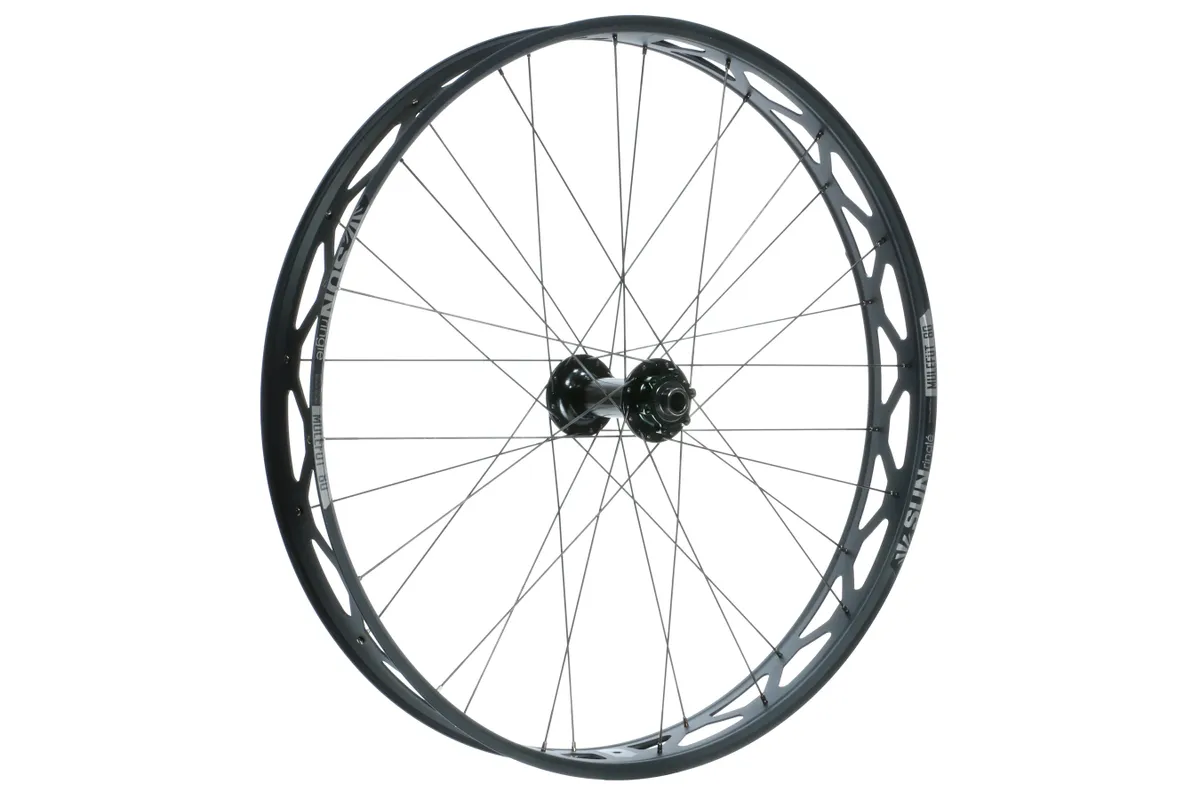
Fat bikes are one of the few modern bike types still using 26-inch wheels (alongside other niche examples such as dirt jump bikes).
Some 27.5-inch fat bikes are also available, however, the smaller wheel size is the more common of the two.
Built to accommodate massive tyres and provide huge air volume, fat bike rims are wider and heavier than most. Their width ranges from 50mm to over 100mm, with the sweet spot for most tyres sitting at 60 to 80mm.
Fat bike tyres
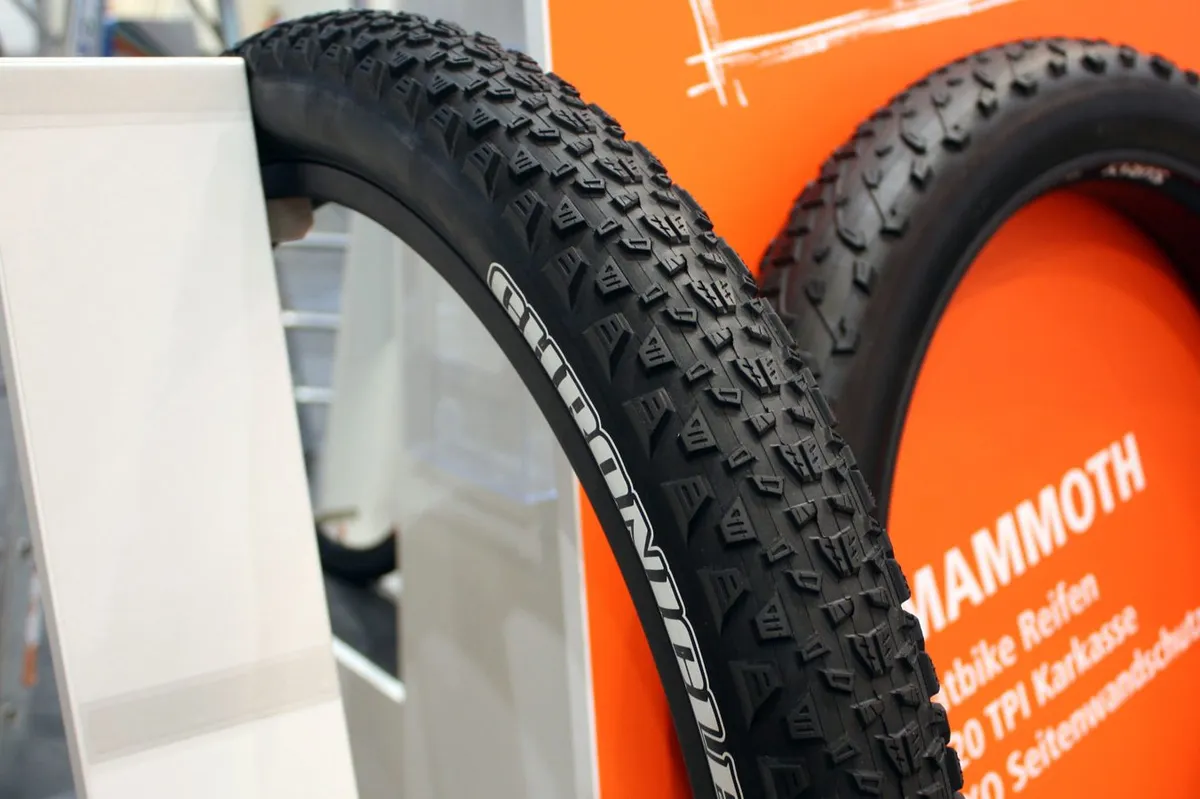
With the majority of the grip being created by the tyre’s massive contact patch, tread designs take somewhat of a back seat on fat bike tyres.
A tyre with a medium level of tread is a great starting point, because aggressive tread can exaggerate the squirm of fat tyres even further when riding on firm ground.
Weight savings should also take a back seat when it comes to choosing a fat bike tyre.
Usually, the heavier the tyre, the better damped it will be – important for minimising pogo-stick rebound and improving comfort on rougher trails.
Because fat bike tyres are run at very low pressures (under 15psi), seemingly small changes (as little as 1psi higher or lower) can have a big impact on the bike’s handling.
Therefore, it's recommended to invest in a digital pressure gauge and to check your tyre pressure before each ride.
Fat bike suspension

While the tyres generate grip, the suspension on a fat bike is there to provide damping and comfort.
Special suspension forks are required to bridge the wide tyres, with the most common front axle spacing measuring 150mm in width. Brands such as RockShox and Manitou are the ones to look out for because both have dedicated fat bike forks in their range.
Drivetrain
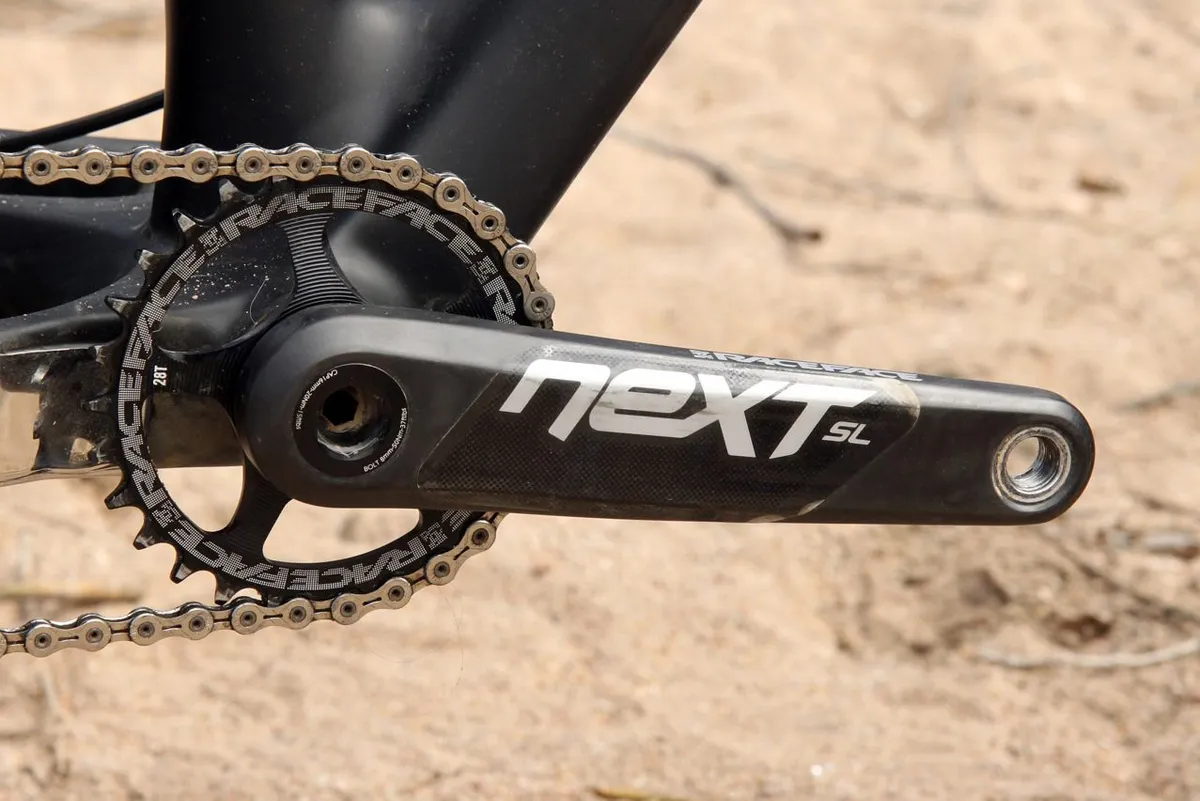
Fat bikes can run the same 1x drivetrains as the best modern mountain bikes. However, due to their super-wide rear-hub spacing (commonly 197x12mm, though that’s by no means a universal standard), they also require a very wide bottom bracket junction to keep the chain line in check.
This has resulted in fat bikes exhibiting Q-factors of around 200mm, which means riders will have their feet roughly 30mm wider apart than on a normal bike.
This wider pedalling position can take some getting used to and also reduces pedal clearance on tight trails.
